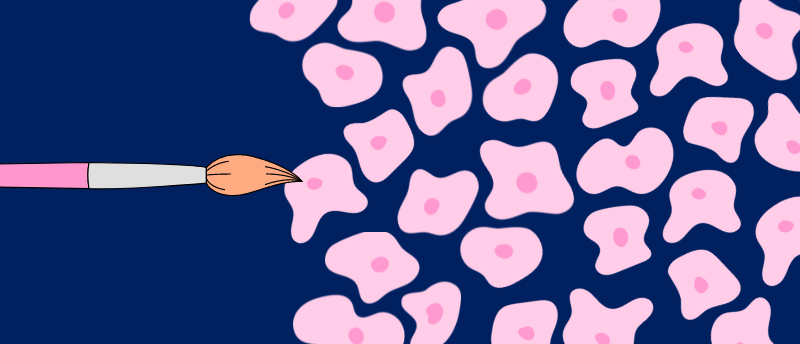It’s an art: a ‘paintbrush’ precisely delivers nanoparticles to single cells

Researchers have developed a new method for precisely delivering nanoparticles or small molecules to the cell surface, contributing to next-generation therapeutic approaches.
The ability to deliver exactly and exclusively experimental materials, and potentially one day therapeutic agents, to single cells is of particular interest to the biology sphere. In a recent study, scientists at the Max Planck Institute for the Science of Light (Erlangen, Germany) have developed a method to do just that, contributing to the exploration of next-generation therapeutic approaches.
Current cell characterization methods often aim to identify features across a cell population, while missing features unique to single cells. Senior author on the paper Vahid Sandoghdar shared, “a crucial gap remains in our ability to administer chemicals, labels, and pharmaceuticals to individual cells with precision and control, over short durations and miniscule microscopic length scales.”
 Breathe easy: how inhalable nanosensors could enhance lung cancer diagnostics
Breathe easy: how inhalable nanosensors could enhance lung cancer diagnostics
Researchers have combined inhalable nanosensors with a simple lateral flow test to detect tumor-associated proteolytic signatures.
To overcome this limitation of current methods, the team created a stable micro-sized droplet of material between two micropipette tips, of which one was dispensing the material and the other was suctioning material at a slightly higher rate. This formed a confined droplet that could be brushed over single cells to deliver material. The micropipettes are easy to move and, due to their readily available nature, provide a low-cost technique for single-cell targeting.
The team termed this new method the µkiss technique, comparing it to a paintbrush carefully and precisely delivering paint to a canvas: “You can easily maneuver the micropipettes around, and gently brush this confined droplet against your chosen cell – delivering a tiny μkiss of material,” commented Richard Taylor, co-author on the paper.
Not only is the technique easy to use, but it offers the researcher full control over the time and position that the material is in contact with the cell of interest. The team used this method to place a single virus-like particle onto a live cell, demonstrating its potential to be used for the investigation of disease propagation.